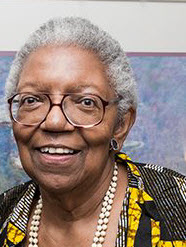Executive Order 14252, Making the District of Columbia Safe and Beautiful, President Donald J. Trump, signed March 27, 2025, published in the Federal Register on April 3, 2025 (90 Fed. Reg. 14559) (Full Document).
 Summary
Summary
Executive Order 14252 directs the federal government to ensure that Washington, D.C., the nation's capital, is "safe, clean, and beautiful." Framing the city as a symbol of American pride and heritage, the order outlines priorities:
- Prevent crime
- Punish criminals
- Preserve public order
- Protect monuments and national heritage
- Promote beautification of public spaces
- Ensure a secure and aesthetic environment for tourists, commuters, and residents
To advance these objectives, the order mandates the creation of a federally appointed task force to coordinate enforcement and public policy activities. It builds upon earlier executive actions, including EO 13933 (June 2020) and EO 14189 (January 2025), and authorizes intensified oversight over public safety, conduct, and property management in the District. Among its initiatives are stricter regulation of public transit behavior, enforcement of laws around graffiti and loitering, and removal of homeless encampments.
Community Reaction
The response from residents, elected officials, and civil rights organizations has mainly been critical:
- Federal Overreach: D.C. Delegate Eleanor Holmes Norton and Mayor Muriel Bowser criticized the executive order for infringing upon the District's self-governance. Norton labeled the task force "thoroughly anti-home rule" and emphasized that no local officials were consulted or appointed.
- Lack of Democratic Input: The unilateral creation of a federal task force with no representation from D.C.'s elected leadership rekindled ongoing concerns about democratic disenfranchisement in the capital, which lacks full voting rights in Congress. This lack of representation is a pressing issue that needs immediate attention.
- Civil Liberties Concerns: The ACLU of D.C. raised alarms that the order's enforcement language could suppress public protests, limit free expression, and criminalize community gatherings—especially in historically Black neighborhoods.
- Disproportionate Impact: Advocates noted that increased surveillance, forced removals of unhoused people, and greater police presence are likely to disproportionately affect Black residents, immigrants, and low-income individuals already targeted by structural inequality. This could lead to further marginalization and displacement, exacerbating the existing social and economic disparities in the community.
Expanded Racial Justice Analysis
Executive Order 14252 poses a profound threat to racial justice in Washington, D.C., a city where the legacies of racial exclusion, gentrification, and systemic policing converge.
1. Disproportionate Impact on Black Communities
Black residents make up over 40% of the D.C. population. The order's focus on aggressive enforcement—particularly around public behavior, cleanliness, and safety—places Black neighborhoods at heightened risk of surveillance, policing, and displacement. This disproportionate impact is a stark reminder of the systemic injustice and inequality faced by Black communities.
2. Undermining Black Political Leadership and Self-Governance
D.C.'s elected leadership is majority Black and has fought for decades to secure local autonomy. The exclusion of local officials from the federally controlled task force continues a pattern of federal domination.
3. Law-and-Order Framework as Racialized Social Control
The order's language evokes "law and order" strategies historically used to suppress Black resistance.
4. Criminalization of Poverty and Displacement
The order mandates the removal of homeless encampments without offering alternatives. Given that Black residents are overrepresented among D.C.'s unhoused, this criminalizes poverty.
5. Disregard for Racial Equity Tools
D.C. law requires Racial Equity Impact Assessments (REIAs). EO 14252 was implemented without one.
6. A Regressive Federal Vision
The order prioritizes symbolic order over community well-being, ignoring the lived realities of Black residents.
Conclusion: A Racial Justice Reckoning for the Capital
Executive Order 14252 is not a neutral effort to improve safety or cleanliness—it is a federal assertion of power that undermines Black political representation, criminalizes poverty, and reinforces systemic racism under the banner of beautification. It is imperative that we recognize this and take action to reclaim our city.
True safety and beauty in Washington, D.C., must center on human dignity, democratic participation, and racial equity. Each one of us has a role to play in this fight, and our collective efforts can make a significant impact.
Advocacy Section: Reclaiming D.C. Through Justice and Local Power
Policy Demands:
- Affirm D.C.'s Right to Home Rule
- Repeal or Nullify EO 14252
- Mandate Racial Equity Assessments
Organizing Strategies:
- Coalition Building
- Public Education
- Policy Advocacy
Suggested Community Actions
1. Engage Your Representatives:
- Contact Delegate Eleanor Holmes Norton and D.C. Councilmembers.
2. Mobilize Public Pressure:
- Use social media campaigns to amplify awareness.
3. Monitor and Challenge Implementation:
- Partner with legal organizations and document any abuses.
4. Demand Representation:
- Ensure inclusion of local officials and grassroots leaders.
5. Support Community-Based Safety Initiatives:
- Promote non-policing models like mental health response and housing-first programs.
Vernellia Randall, Professor Emerita of Law, University of Dayton School of law, Dayton, Ohio. This article was drafted with the assistance of ChatGPT, an AI language model. All content has been reviewed and edited by Vernellia Randall to ensure accuracy and coherence.


